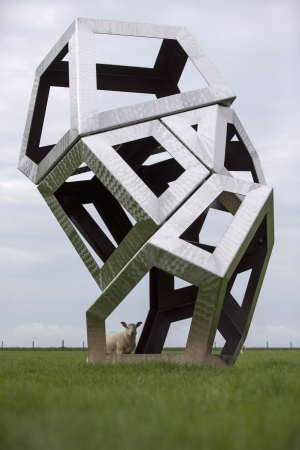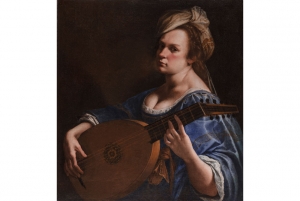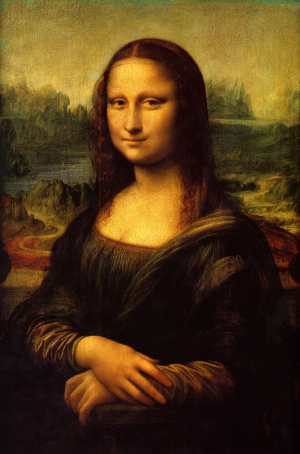|
Displaying items by tag: commission

One of the nine Usonian homes built in Ohio by the celebrated American architect Frank Lloyd Wright has just been put on the market. Located in Willoughby Hills, the 1,800-square-foot Louis Penfield House comes with two cottages on nearly 19 acres of land and carries a price tag of $1.7 million. Completed in 1955, the house was commissioned by Louis Penfield, a high school art teacher.
Wright began designing his Usonian homes in 1936. The houses, which erred on the smaller side, were made with middle-income families in mind. The homes were typically one story, flat-roofed dwellings without a garage and little storage space. The abodes usually featured overhangs or carports (a term coined by Wright) to protect parked vehicles. Wright’s Usonian houses were constructed using native materials and featured a strong visual connection between exterior and interior spaces. In total, Wright created around sixty Usonian homes, which served as the predecessor for the ranch-style houses that dominated residential architecture during the 1950s.

The Israel Museum, Jerusalem, today announced the acquisition of Gustav Klimt’s Die Medizin (Kompositionsentwurf) (1897-1898), the artist’s only remaining oil study for a controversial series of monumental paintings created for the University of Vienna’s Great Hall. Commissioned by Austria’s Ministry of Culture and Education in 1894, Die Medizin is one of three allegorical panels representing the themes of enlightenment Klimt developed for the Great Hall’s ceiling. All three works were later destroyed by retreating German SS forces in May 1945. Blending elements of neo-Baroque and Secessionist aesthetics, the work captures the emergence of Klimt’s iconic style and unconventional treatment of subject matter and themes. Representing a seminal moment in the artist’s development, this acquisition is the first painting by Klimt to enter the collection, joining several works on paper. It is on display in the Museum’s 19th century, Impressionist, and Post-Impressionist galleries, within the context of the Museum’s presentation of fine art from the Renaissance through the 20th century.
Gustav Klimt (1862-1918) is considered one of the most innovative artists of the early 20th century for his distinct style, which joined gold leaf and ornamentation in rich figurative compositions. In 1897, he became one of the founding members and president of the Vienna Secession, whose aim was to break away from historicism by providing a platform for unconventional young artists through exhibitions and publications.

Widely considered one of the greatest sculptors of all time, British artist Henry Moore played a pivotal role in translating modernism into three dimensions. A new exhibition at the artist’s former home in Hertfordshire, England, examines the influence that Moore’s soaring, organic sculptures had on contemporary art.
“Body & Void: Echoes of Moore in Contemporary Art” presents works by some of the world’s most celebrated contemporary arts, including Damien Hirst, Rachel Whiteread, Antony Gormley, and Anish Kapoor. Works by a number of post-war artists, such as Joseph Beuys and Bruce Nauman, are also included in the exhibition. Site specific works by leading British artists Richard Deacon and Robert Long have been commissioned as part of the show.
“Body & Void” presents sculptures that examine Moore’s central themes, including the exploration of internal and external space, mother and child, and figures in a landscape, alongside contemporary works that touch on the same topics. For example, Hirst’s “Mother and Child (Divided),” a bisected cow and calf floating in giant tanks of formaldehyde, appears between Moore’s rose marble sculpture “Mother and Child” and “Stringed Mother and Child,” a single plaster cast that features two forms connected by a series of cords. The three works explore the same mother and child relationship in vastly different ways.
“Body and Void” fills the galleries and gardens at Perry Green, where Moore lived and worked for 50 years. The estate is also home to the Henry Moore Foundation, which was established by the artist in 1977. Although Moore amassed considerable wealth during his lifetime, he chose to live frugally and put most of his fortune towards endowing the Foundation, which continues to support education and promotion of the arts.
“Body & Void: Echoes of Moore in Contemporary Art” will remain on view at Perry Green through October 26.

The Wadsworth Atheneum Museum of Art in Hartford, Connecticut, has acquired a rare self-portrait by the Italian Baroque painter Artemisia Gentileschi, who is widely regarded as the most important female artist before the modern period. The institution purchased “Self-Portrait as a Lute Player” from Christie’s New York using funds from the recently established Charles H. Schwartz Fund for European Art. It is the first painting by a female artist of the Baroque period to enter the Wadsworth Atheneum’s permanent collection.
“Self-Portrait as a Lute Player” is one of only three uncontested self-portraits by Gentileschi that are known to exist. The work was most likely commissioned by the Grand Duke Cosimo II de’Medici and was recorded in the Medici collection as early as 1638. The painting’s whereabouts remained a mystery until it surfaced in a private collection in 1998. It was subsequently featured in major Gentileschi exhibitions around the world. The Wadsworth’s recent acquisition expands the museum’s already-stellar collection of Baroque masterpieces, which includes works by Caravaggio, Claude Lorrain, and Nicolas Poussin.
“Self-Portrait as a Lute Player” will make its public debut alongside works by Fra Angelico, Caravaggio, Artemisia’s father Orazio Gentileschi, Claude Monet, and Pierre-Auguste Renoir in 2015 following a reinstallation of the museum’s European collections in the Morgan Memorial Building, which is undergoing an extensive renovation.

Rembrandt’s “The Conspiracy of the Batvians under Claudius Civilis” is currently on view at the Rijksmuseum in Amsterdam. Once the Dutch master’s largest and most celebrated painting, the masterpiece is owned by the Royal Swedish Academy of Fine Arts and has been at the Nationalmuseum of Art in Stockholm for over 150 years. During that time, the work has left Sweden only twice -- once in 1925 and again in 1969. On both of those occasions the painting was sent to Amsterdam and displayed at the Rijksmuseum. The current showing commemorates the 400-year anniversary of bilateral relations between Sweden and the Netherlands.
Rembrandt painted “The Conspiracy of the Batvians under Claudius Civilis” between 1661 and 1662 under a commission from the burgomasters of Amsterdam. The canvas, which was originally 18 feet high by 18 feet wide, was intended to be part of a series of eight equally sized paintings depicting Batvian history to be hung in the new Amsterdam Town Hall (now the Royal Palace Amsterdam). The Batvians lived in the Netherlands at the start of the Christian era and famously revolted against the Romans, who ruled northern Europe.
In 1662, a month after “The Conspiracy of the Batvians under Claudius Civilis” was hung in the Amsterdam Town Hall, Rembrandt retrieved the painting to make changes to it. The work was cut down to about 6 feet high by 10 feet wide, most likely by the artist himself, and was never returned to the Town Hall. The existing portion of the canvas was donated to the Royal Swedish Academy of Fine Arts in 1798. In 1865, the work was given to the National Museum of Art on long-term loan.
“The Conspiracy of the Batvians under Claudius Civilis” is on view in the Rijksmuseum’s Gallery of Honour.
Each year, the Metropolitan Museum of Art in New York commissions an artist to create a site-specific installation for its rooftop, which features a garden cafe, martini bar and breathtaking views of Manhattan. The museum announced that it has tapped American conceptual artist, Dan Graham, to create this year’s exhibit, which will be on view from April 29 through November 2.
Graham, who is best known for his architectural environments and glass pavilions, will work with the Swiss landscape architect Günther Vogt for the commission. While officials say that Graham’s pavilion for the Met is still in development, it has been revealed that it will be made of steel, glass and hedgerows.
Graham, who began his career as the director of the John Daniels Gallery in New York, where he put on Sol LeWitt’s first one-man show, has been making his well-known pavilions since the 1980s.

The Italian art historian Silvano Vinceti announced that he will run a series of DNA tests on a skeleton that could be the remains of Lisa Gheradini, a Florentine woman believed to be the sitter for Leonardo da Vinci’s "Mona Lisa." Vinceti is attempting to link the skeleton, which was found in a convent in Florence, to the bones of Gheradini’s relatives buried in a nearby chapel. The results should be ready in May or June.
It is believed that Gheradini’s husband, Francesco Del Giocondo, commissioned the portrait to celebrate either his wife’s pregnancy or the purchase of a house around 1502 and 1503. After Del Giocondo’s death, Gheradini became a nun. She died in 1542 at the age of 63 and was said to be buried near the Sant’Orsola convent’s altar. Her family tomb was opened up last August for the first time in centuries in hopes of identifying the model in da Vinci’s painting.
It is widely believed that "Mona Lisa" was painted sometime between 1503 and 1506, when da Vinci was living in Florence. It now hangs in the Louvre in Paris, where it remains a star attraction.

The Munson-Williams-Proctor Arts Institute’s Museum of Art in Utica, New York is sending a collection of Thomas Cole paintings on an 18-month tour to four major art museums. “The Voyage of Life,” a series of four allegorical paintings depicting the different stages of life including “Childhood,” “Youth,” “Manhood,” and “Old Age,” will go to the Taft Museum of Art in Cincinnati, Ohio, the Chrysler Museum of Art in Norfolk, Virginia, the Saint Louis Art Museum in St. Louis, Missouri, and the Dickson Gallery & Gardens in Memphis, Tennessee. The works will remain at the MWPAI until March 2, 2014.
Cole, the English-born American artist who founded the Hudson River School, was commissioned to paint “The Voyage of Life” by banker Samuel Ward between 1839 and 1840. When Ward passed away, Cole argued with Ward’s heirs over who had custody of the art. Ultimately, the heirs won and Cole painted another version of “The Voyage of Life” for himself. Cole’s second rendition of the series resides in the National Gallery of Art in Washington, D.C.
The MWPAI is producing a catalog to tour with the collection, which will include essays and notes as well as never-before-published material and research about the paintings.
Dennis Kois, the executive director of the deCordova Sculpture Park and Museum in Lincoln, Massachusetts, will step down from his post this May. Kois will return to his native Wisconsin to serve as the Milwaukee Public Museum’s president and chief executive officer.
Since joining the deCordova in 2008, Kois has expanded the museum’s collection, commissioned works by celebrated artists such as Andy Goldsworthy and Orly Genger, and helped raise millions for the once cash-strapped institution. Following the announcement of Kois’ departure, museum trustee Deborah A. Hawkins donated $1 million to the deCordova to bolster curatorial initiatives in his absence.
Prior to his time at the deCordova, Kois served as the director of the Grace Museum in Abilene, Texas and before that, he was the chief designer at the Smithsonian Institution’s Freer and Sackler Galleries in Washington, DC. Kois will advise the deCordova on its search for a new executive director.

London’s National Maritime Museum is currently hosting Turner and the Sea, the first large-scale exhibition to explore J.M.W. Turner’s lifelong fascination with the sea. The British Romantic painter, who is often called the “painter of light,” was drawn to the sea’s sublime yet dangerous nature and spent decades trying to capture its wild beauty.
Turner and the Sea includes 120 works from some of the world’s most prestigious institutions including London’s National Gallery, the Tate, the Yale Center for British Art, the British Museum, the Metropolitan Museum of Art, and the National Gallery of Art in Washington, D.C. Works on view range from Turner’s transformative paintings of the 1790s to his unfinished works created towards the end of his life. Highlights include The Battle of Trafalgar, Turner’s largest painting and only royal commission; Fishermen at Sea, the first oil painting Turner exhibited at the Royal Academy; The Wreck of a Transport Ship, which has not been seen in London since the 1970s; and The Wreck Buoy, Turner’s last exhibited marine painting.
Turner and the Sea will be on view at the National Maritime Museum through April 21, 2014.
|
|
|
|
|